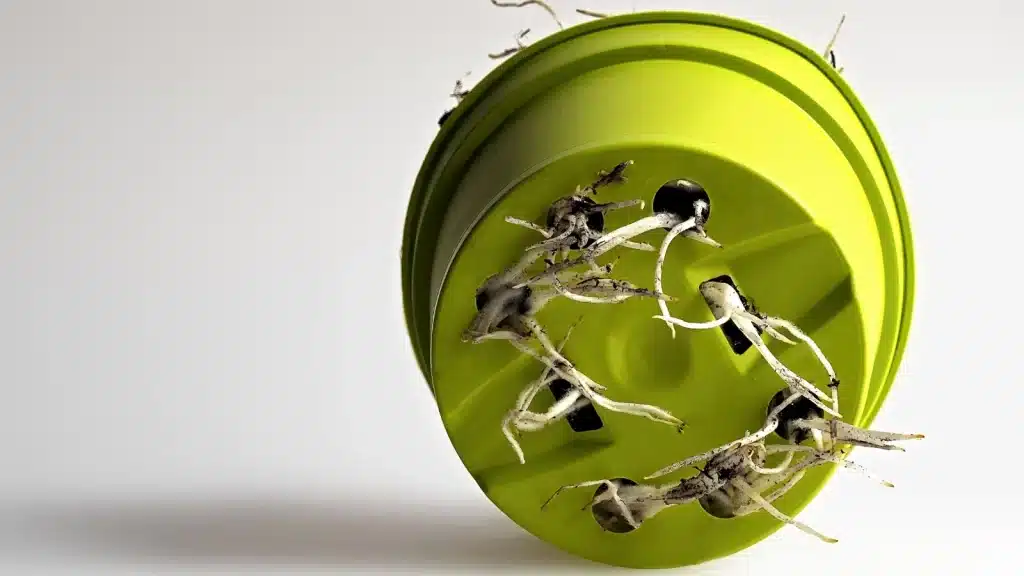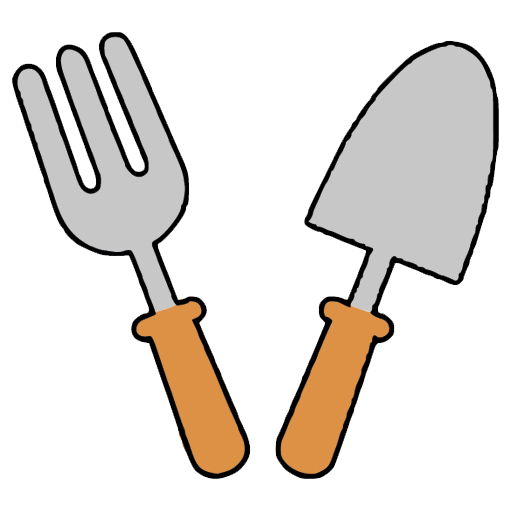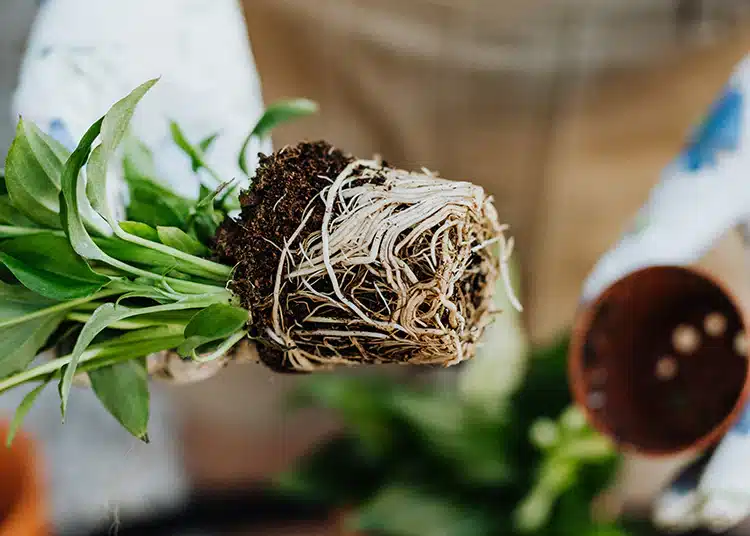Contents
- 1 Signs Your Indoor Plant Needs Repotting (Don’t Miss These Clues)
- 1.1 Why Repotting Matters
- 1.2 1. Roots Are Growing Out of the Drainage Holes
- 1.3 2. Water Drains Too Quickly (or Barely at All)
- 1.4 3. Soil Looks Tired, Crusty, or Smells Bad
- 1.5 4. The Plant Looks Too Big for Its Pot
- 1.6 5. Yellowing Leaves or Stunted Growth
- 1.7 6. You Haven’t Repotted in Over a Year
- 1.8 FAQs About Repotting Indoor Plants
- 1.9 Final Thoughts on Knowing When to Repot
- 2 How to Trim Indoor Plants the Right Way
Signs Your Indoor Plant Needs Repotting (Don’t Miss These Clues)
Healthy plants don’t just depend on water and light — their roots need space to breathe and grow.
Over time, even the happiest indoor plants outgrow their pots. When that happens, growth slows, leaves fade, and soil dries faster than usual.
In this guide, you’ll learn the key signs your indoor plant needs repotting — plus how to give it a stress-free move into fresh soil for stronger roots and faster growth.
Why Repotting Matters
Repotting isn’t just about giving your plant a new home — it’s about renewing its entire environment.
Old soil loses nutrients, becomes compacted, and stops draining properly. As roots expand, they need more room to absorb water and oxygen efficiently.
When roots are cramped, plants become “root-bound” — circling around the pot walls instead of spreading freely. That leads to stunted growth, wilting, and even death. Repotting keeps everything fresh, balanced, and breathable.
1. Roots Are Growing Out of the Drainage Holes
The most obvious sign your plant needs repotting?
Roots poking through the bottom of the pot.
When you lift your pot and see a tangled mass sticking out, it means the root system has filled every inch of available space. This not only blocks drainage but also restricts nutrient absorption.
Gently slide the plant from its pot — if the root ball holds its shape tightly and circles around itself, it’s time for a bigger container (2–3 cm wider).

2. Water Drains Too Quickly (or Barely at All)
If your soil dries out just hours after watering, the roots may have displaced most of the potting mix — leaving little soil to hold moisture.
Alternatively, compacted soil might stay soggy for days. Both extremes are warning signs.
Repotting solves this by introducing fresh, well-draining soil that restores balance and allows consistent moisture control.
🪴 Pro tip: Use a moisture meter to check if water is reaching the lower layers — you can find digital options on Amazon that help prevent over- or under-watering.

3. Soil Looks Tired, Crusty, or Smells Bad
When the surface turns white with mineral buildup or starts to smell earthy-sour, your potting mix has broken down.
Overused soil compacts tightly, blocks oxygen, and can harbor bacteria or mold spores.
Repotting gives your plant fresh structure and nutrients. For added airflow, mix perlite or coco coir into the new soil — both keep it light and fluffy.
You can find premium indoor potting mixes with perlite and organic coco coir bricks on Amazon that rejuvenate soil texture quickly.
BBC Gardeners’ World – How to RepoHow to Repot Houseplants Properly
4. The Plant Looks Too Big for Its Pot
When your plant looks top-heavy or tips over easily, it’s likely outgrown its container.
A cramped pot also limits nutrient access — the roots simply can’t keep up with the foliage above.
Choose a new pot that’s no more than 2 inches wider in diameter than the old one.
A pot that’s too large can lead to soggy soil; one that’s slightly larger gives the roots room to expand safely.
✨ Pro tip: Look for terracotta pots with drainage holes — they breathe well and naturally regulate moisture.
5. Yellowing Leaves or Stunted Growth
When roots run out of space or nutrients, your plant will tell you through its leaves.
Yellowing, browning edges, or smaller new leaves often mean it’s struggling underground.
Repotting replaces depleted soil with nutrient-rich mix, helping restore vibrant color and steady growth.
It’s also a good time to trim dead or circling roots to encourage healthy regrowth.
If growth still doesn’t return after repotting, review your lighting and watering routine — sometimes, those habits need an update too.
6. You Haven’t Repotted in Over a Year
Even if your plant looks fine, it still benefits from occasional repotting.
Indoor soil degrades over time, losing aeration and nutrients. Most houseplants appreciate a full refresh every 12–18 months.
During repotting season (spring or early summer):
Gently remove the plant from its pot.
Prune damaged roots with sterilized shears.
Refill with fresh, well-draining potting mix.
Water lightly and place in indirect light for recovery.
You can find repotting tool sets (scoops, mini rakes, cleaning brush) on Amazon that make the process cleaner and easier.
FAQs About Repotting Indoor Plants
1. What’s the best time of year to repot indoor plants?
Spring and early summer are ideal. Plants grow faster, recover quickly, and adapt to new soil with less stress.
2. Can I reuse old potting soil?
You can, but refresh it first by mixing in new perlite or compost. Old soil alone tends to compact and restrict airflow.
3. Should I water before or after repotting?
Water lightly the day before repotting so roots are hydrated but not soaked. After repotting, wait two days before heavy watering.
4. Do all plants need repotting annually?
No. Slow growers like snake plants or succulents only need fresh soil every 2–3 years. Fast growers need it more often.
Final Thoughts on Knowing When to Repot
Repotting might seem daunting, but it’s one of the most rewarding steps in plant care.
By watching for the signs — visible roots, compacted soil, yellow leaves, or slowed growth — you’ll catch problems early and keep your indoor jungle healthy for years.
Give your plant a little more space and fresh soil, and you’ll see new growth in no time.
RELATED ARTICLES
KEEP YOUR INDOOR GARDEN HEALTHY ALL YEAR
How to Trim Indoor Plants the Right Way
Learn simple pruning techniques to boost new growth, prevent leggy stems, and keep your houseplants looking lush and full season after season.

